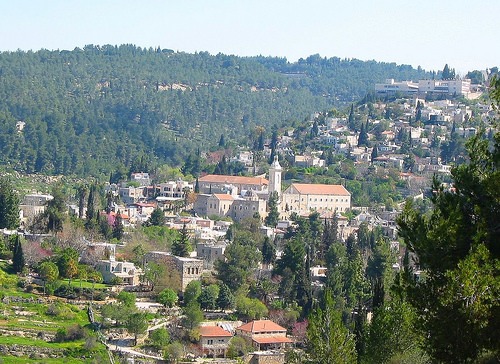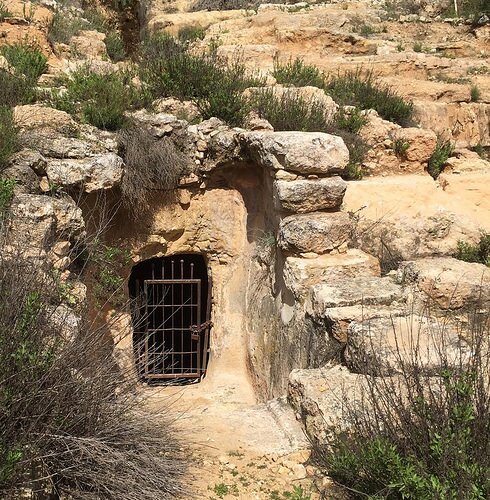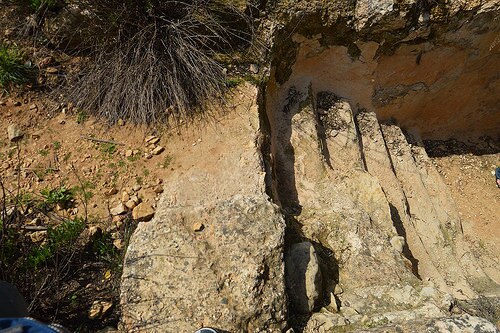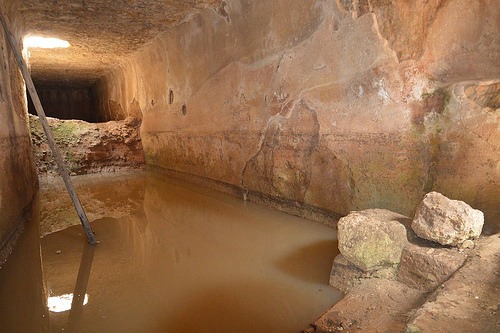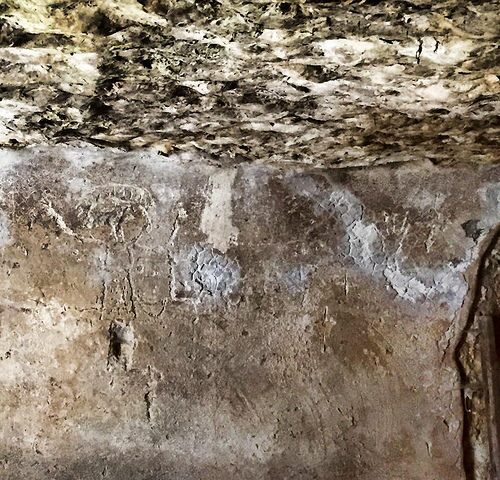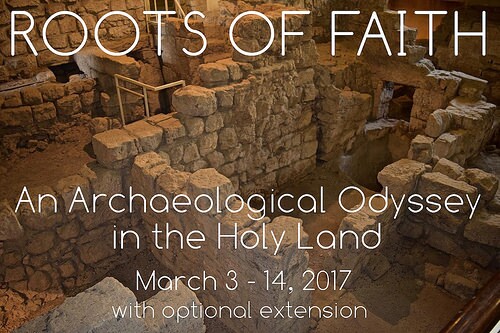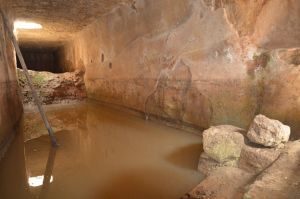
In March, 2016, Dr. James D. Tabor of the University of North Carolina at Charlotte led a group to revisit a cave not far from Jerusalem, a site he and archaeologist Shimon Gibson began excavating more than 15 years ago. Many know it as the Suba Cave, an ancient cave some scholars hypothesize John the Baptist used to perform baptisms near Ein Karem in the Judean hills, a place that tradition holds was his home town………….
Dr. James D. Tabor, one of the world’s foremost authorities on 2nd Temple period Judaism and early Christian origins, calls it “one of the greatest archaeological discoveries of the last 25 years”. Located near the Tzuba kibbutz just west of Jerusalem in the Judean hills, an ancient cave was discovered by archaeologists in 1999. Otherwise popularly known as the Suba Cave, it is located near a vineyard within walking distance of Ein Karem, the small town or village long traditionally considered to have been the birthplace and home of John the Baptist and his family.
It all began when Shimon Gibson, a well-known British-born Israeli archaeologist, was first contacted in 1999 about carvings or engravings discovered in a cave near Tzuba and Ein Karem. After his initial investigation of the cave, he called Tabor, by then known as a scholarly expert on John the Baptist.
“I remember I was sitting in my office when he called,” said Tabor. “At first, I didn’t believe it.”
Gibson suggested that the location, the drawings/engravings, and other circumstantial elements pointed to the possibility of some association with John the Baptist. Following examination of photos of the cave drawings sent by Gibson, Tabor knew there was something to this discovery beyond a simple hunch. He, along with Gibson, quickly assembled an excavation team and, very early on, unearthed something that had exceeded all expectations.
“I’ll never forget that day,” said Tabor, as he related the story of the day they really hit “pay dirt”. In the beginning, the cave, having silted up through centuries, allowed only about one meter’s worth of clearance from the roof of the cave to ‘ground level’ in order to enter. “We had to crawl on our hands and knees,” said Tabor. But on the last day of the excavation season in March of 2000, the excavators began to encounter Roman period pottery shards.
“As we dug down we suddenly came across a meter to a meter and a half filled with clearly 1st century CE period pottery shards, and this was out of a total of 4 meters of cultural layers in the cave. So something was really going on in this cave during the early 1st century. We found evidence of thousands of clay vessels in the cave, all broken.”
Successive seasons uncovered a large, plastered cave carved out of bedrock with steps leading into a large interior pool of water. The cave extended 90 feet into the hillside bedrock. Gibson and Tabor suggest that it was a place for ritual immersion, or baptism. In the 1st century CE such a feature was normally characterized as a mikveh, a Jewish ritual bath, ancient examples of which can be found throughout Israel at a variety of archaeological sites. The Suba Cave is now considered to be the largest mikveh in Israel.
Given the abundance and concentration of the vessels — what was determined to have been small one-handled jugs — the archaeologists concluded that they had to have been deliberately broken and deposited in a relatively short time period.
What was happening in this place?
Tabor and Gibson hypothesize that the pottery shards were related to a baptismal ritual conducted in the cave. Based in part on their research of 2nd century manuscripts, they suggest that baptisms at the time of Jesus and John may have followed a set process that included not only dipping, or immersion, in the water, but also the pouring of water over the head from the vessel, the anointing of the right foot (there is a foot-shaped cavity carved out of the bedrock near the steps no far from inside the cave entrance and just above the water line), and the deliberate breaking of the vessel so the vessel could no longer be used for common purposes. The thousands of 1st century jug shards uncovered in the cave were the remains of these vessels.
Was this in fact a cave used by John to baptize people during the time of Jesus? A cave with drawings or engravings that could be interpreted as a pictographic or visual representation of John the Baptist, located very near Ein Karem, the home town of John and his family, with evidence of use as a facility for ritual immersion — all pointed to this possibility, according to the site excavators.
But it should be noted that the Suba Cave was initially created and used for a very different purpose. The plaster lining the interior walls of the cave was radiocarbon dated to the Iron Age, and more specifically, to the time of King Hezekiah of Judah. Five years of excavation and research revealed that the cave, including associated exterior features, was actually initially created and used as a clay-making facility for the manufacture of pottery. The cave was first meant to be “a water reservoir [fed by an adjacent spring, which still exists] for clay making,” says Tabor. “Pottery for the king’s house was made at Tzuba because the clay was so pure. Then it went out of use in the 2nd century BCE and silted over.” It was then re-dug and converted into a ritual immersion facility during the 1st century CE.
__________________________________________
A view of the village of Ein Karem. Gila Brand, Wikimedia Commons
_______________________________________________________
The Suba Cave entrance, looking toward it from outside the cave. Photo by Victoria Brogdon
________________________________________________________
Steps leading down to the Suba Cave entrance. Photo by Daniela Ciubuc
________________________________________________________
Looking into the Suba Cave from the interior steps, which descend into the water as is typically characteristic of an ancient mikveh. The interior of the cave is covered in plaster, which has been present since first applied by the ancients during the days of Hezekiah, King of Judah, when it was initially used as a clay-making facility for pottery-making. The water, though it appears murky, is surprisingly clean in terms of bacterial content. Photo by Daniela Ciubuc.
______________________________________________________
Rough engraved dawings high on the interior wall of the cave, above the water. Note the figure of a person on the left. Site investigators have interpreted this as an individual, perhaps even John the Baptist, officiating a ritual activity, such as a baptismal rite. Photo by Victoria Brogdon
___________________________________________________
This article is a preview excerpt from the article, In Search of the Historical Jesus, to be released as a major feature article in the Summer 2016 issue of Popular Archaeology Magazine.
___________________________________________________
Travel with Popular Archaeology and personally see some of the most exciting archaeological discoveries underpinning the historical basis for the places and events of the biblical accounts!
____________________________________

______________________________________________
Travel and learn with Far Horizons.
____________________________________________
This richly illustrated issue includes the following stories: Recent findings shedding new light on the whereabouts of the remains of Philip of Macedon, father of Alexander the Great; how an archaeologist-sculptor is bringing bones of the dead back to life; archaeologists uncovering town life at the dawn of civilization; an exclusive interview with internationally acclaimed archaeologist James M. Adovasio about what makes the Meadowcroft Rockshelter prominent in the ongoing search for the first Americans; what archaeologists are finding at the site of the ancient city of Gath, the home town of the biblical Philistine giant, Goliath; and how scientists are redrawing the picture of human evolution in Europe. Find it on Amazon.com.

